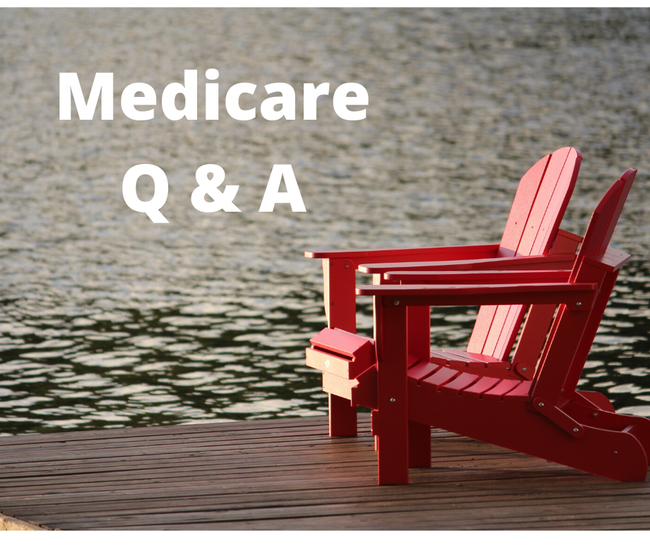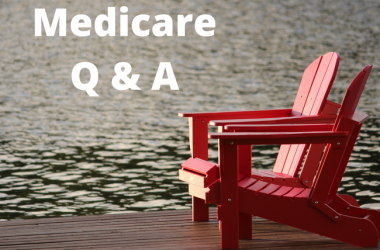The couple were wrestling with a thorny question that many Oregon public employees confront each year: In moving from active employment to Medicare, should they enroll in a PERS Medicare insurance plan or in one on the open market?
It’s a consequential question whose answer depends on an individual’s unique circumstances.
The couple took their question to a Senior Health Insurance Benefits Assistance volunteer counselor in hopes of finding the information they needed to make the decision.
Both spouses are public employees – one for the state, the other for city government – and both will be eligible to enroll in Public Employees Retirement System PERS Medicare insurance. They made comparing plans easier by stipulating that they wanted to keep the doctors they have and wanted insurance with the same company they have now through their employers.
The SHIBA counselor suggested they compare the PERS plan’s cost and benefits to those of the same company’s most robust (and expensive) plan on the open market. (Note: This compares one company’s plans and may not reflect other comparisons of PERS and market plans.)
Looking only at monthly premiums, the decision would appear easy: The monthly premium for the PERS insurance would be about $275 compared with $131 for the plan on the open market. But the $142 higher cost with the PERS plan buys the individual additional benefits that may be important, depending on the individual’s circumstances.
And nobody said this would be easy: Some public employees qualify for a $60 discount on the monthly premium, which would instead make the premium comparison $215 (PERS) versus $131 (market plan), reducing the monthly difference to $84. (This so-called RHIA benefit is described on the PERS Health Insurance Program website, although it’s important to work directly with PERS to determine eligibility.)
In this Medicare-counseling conversation, one spouse reported robust good health while the other acknowledged increasingly expensive medical needs. Consider the difference in benefits between the PERS plan and the market plan:
Annual medical spending: PERS would cap annual out-of-pocket medical spending at $1,000, while the market plan’s limit was $3,000. Here, if the individual has the RHIA $60-a-month premium reduction, enrolling in the PERS plan would add about $1,000 in annual premium cost over the market plan while reducing potential out-of-pocket medical spending by $2,000.
Inpatient hospitalization: The co-pay with the PERS plan is $200 per hospital admission, compared with the market plan’s $270 a day for each of the first six days of inpatient hospitalization.
Skilled nursing care: This is temporary care following an illness or injury after three or more midnights in the hospital. The patient with the PERS plan would pay nothing, while the one with the market plan would pay nothing for the first 20 days and $196 a day after that (up to the $3,000 annual medical spending limit).
Prescription drugs: This comparison is more difficult. Pharmacy costs for the market plan can be obtained on the Medicare.gov website, with which a SHIBA volunteer counselor could assist. The PERS plan, meanwhile, shows pharmacy costs by the drugs’ tier levels. A call to PERS (503-224-7377) would yield either direct assistance or steps for using PERS’ drug-price website.
Those are the big-ticket items. Both plans offer a Silver & Fit gym membership, and the market plan offers a $1,250 annual dental benefit. Both plans offer benefits during travel outside of the United States, too, where it’s a good idea to check with the plan to see whether the benefit aligns with one’s travel expectations.
For a decision as consequential as this, it’s worth comparing plans using the PERS booklet for its Medicare insurance plans and the Medicare website (or a SHIBA volunteer counselor) to review plans available on the open market. Always check that your doctors will bill the insurance you choose, too.
As for the couple who met with the SHIBA counselor, it was unclear what decision they would make. It appeared, though, that they were leaning toward one enrolling in the PERS plan, the other in the market plan. The decision has the added wrinkle that most PERS members may enroll in PERS Medicare insurance when they are first eligible, but not later.
This encounter is unique to this couple’s circumstances, although elements of the analysis could be useful for others making a decision. SHIBA counselors are expected to provide factual information, and will refer people to PERS for questions about its insurance.
If you would like to make an appointment with a SHIBA volunteer counselor, or to ask a question to be answered here, please see below.
Jim Sellers of Salem is a certified Medicare counselor with the Senior Health Insurance Benefits Assistance (SHIBA) program. To ask a question to be answered in this column, e-mail [email protected]. To schedule a free SHIBA phone, Zoom or in-person appointment with a volunteer Medicare counselor, call 800-722-4134.
STORY TIP OR IDEA? Send an email to Salem Reporter’s news team: [email protected].
SUPPORT OUR WORK – We depend on subscribers for resources to report on Salem with care and depth, fairness and accuracy. Subscribe today to get our daily newsletters and more. Click I want to subscribe!









